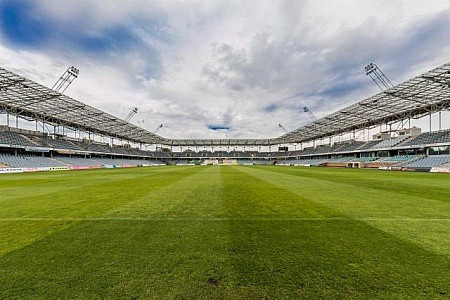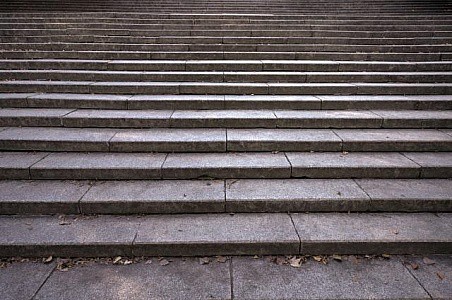[《太空幻想派对》教学反思]细节描述:开展活动之前,我就思考着怎样布置一个黑暗的场所让幼儿探索,由于活动室里窗户过多且未安装窗帘,大面积的遮挡有一定的难度。用普通的布遮光线还是会很强,于是姚老师给我...+阅读
阅读提示:太空站是在外太空的人造的太空舱,设计适合人类居住,可以用作太空人停留和工作的地方。太空站可作研究人类在长期的太空旅程中身体的适应情况。比起其他太空中的物体,它提供了更多更广的科学研究的空间。
A space station is an artificial structure designed for humans to live in outer space. A space station is distinguished from other manned spacecraft by its lack of major propulsion or landing facilities — instead, other vehicles are used as transport to and from the station. Space stations are designed for medium-term living in orbit, for periods of weeks, months, or even years.
Space stations are used to study the effects of long-term space flight on the human body as well as to provide platforms for greater number and length of scientific studies than ailable on other space vehicles. Since the ill-fated flight of Soyuz 11 to Salyut 1, all manned spaceflight duration records he been set aboard space stations. The duration record of 437.7 days was set by Valeri Polyakov aboard Mir from 1994 to 1995. As of 2005, 3 astronauts he pleted single missions of over a year, all aboard Mir.
Past and present space stations
Salyut stations: Salyut 1, Salyut 2 (failed on-orbit, never occupied), Salyut 3, Salyut 4, Salyut 5, Salyut 6, Salyut 7
Skylab
Mir
International Space Station (ISS)
Following the controlled deorbiting of Mir in 2001, the International Space Station is the only one of these currently in orbit; it has been continuously manned since October 30, 2000.
A second Skylab unit (Skylab B) was manufactured, as a backup article; due to the high costs of providing launch vehicles, and a desire by NASA to cease Saturn it incorporated elements of a Mir replacement station ("Mir 2") which was also never constructed. Other cancelled space station programs included the United States Air Force Manned Orbiting Laboratory project, cancelled in 1969 about a year before the first planned test flight; this was unusual in being an explicitly military project, as opposed to the Soviet Almaz program, which was heily intertwined with - and concealed by - the contemporaneous Salyut program.
Currently, Bigelow Aerospace is mercially developing inflatable habitat modules, derived from the earlier Transhab concept, intended to be used for space station construction.
Types of space station
Broadly speaking, the space stations so far launched he been of two types; the earlier stations, Salyut and Skylab, he been "monolithic", intended to be constructed and launched in one piece, and then manned by a crew later. As such, they generally contained all their supplies and experimental equipment when launched, and were considered "expended", and then abandoned, when these were used up.
Starting with Salyut 6 and 7, a change was seen; these were built with two docking ports, which allowed a second crew to visit, bringing a new spacecraft (for technical reasons, a Soyuz capsule cannot spend more than a few months on orbit, even powered down, safely) with them. This allowed for a crew to man the station continually. The presence of a second port also allowed Progress supply vehicles to be docked to the station, meaning that fresh supplies could be brought to aid long-duration missions. This concept was expanded on Salyut 7, which "hard docked" with a TKS tug shortly before it was abandoned; this served as a proof-of-concept for the u

se of modular space stations. The later Salyuts may reasonably be seen as a transition between the two groups.
The second group, Mir and the ISS, he been modular; a core unit was launched, and additional modules, generally with a specific role, were later added to that. (On Mir they were usually launched independently, whereas on the ISS most are brought by the Shuttle). This method allows for greater flexibility in operation, as well as removing the need for a single immensely powerful launch vehicle. These stations are also designed from the outset to he their supplies provided by logistical support, which allows for a longer lifetime at the cost of requiring regular support launches.
These stations he various issues that limit their long-term habitability, such as very low recycling rates, high radiation levels and a lack of grity. Some of these problems cause disfort and long-term health effects. In the case of solar flares, most current habitats even he an acute danger of radiation poisoning. Some space habitats address these issues, and are intended for long-term occupation. Some designs might even acmodate large numbers of people, essentially "cities in space" where people would make their homes. No such design has yet been constructed, because even for a small station, the extra equipment is too expensive to place in orbit at current (2005) launch costs.
List of occupied space stations, with statistics
Space station Launched Reentered Days in use Total crew
and visitors Visits Mass
(kg)
In orbit Occupied Manned Unmanned
Salyut 1 Apr 19, 1971
01:40:00 UTC Oct 11, 1971 175 24 3 2 0 18,425
Skylab May 14, 1973
17:30:00 UTC Jul 11, 1979
16:37:00 UTC 2,249 171 9 3 0 77,088
Salyut 3 Jun 25, 1974
22:38:00 UTC Jan 24, 1975 213 15 2 1 0 18,500
Salyut 4 Dec 26, 1974
04:15:00 UTC Feb 3, 1977 770 92 4 2 1 18,500
Salyut 5 Jun 22, 1976
18:04:00 UTC Aug 8, 1977 412 67 4 2 0 19,000
Salyut 6 Sep 29, 1977
06:50:00 UTC Jul 29, 1982 1,764 683 33 16 14 19,000
Salyut 7 Apr 19, 1982
19:45:00 UTC Feb 7, 1991 3,216 816 26 12 15 19,000
Mir Feb 19, 1986
21:28:23 UTC Mar 23, 2001
05:50:00 UTC 5,511 4,594 137 39 68 124,340
ISS Nov 20, 1998
21:28:23 UTC — **2,473 **1,759 ***144 ***28 **21 **183,283
**ISS stats as of August 28, 2005.
***ISS stats as of October 6, 2005.
In fiction
A large amount of science fiction is set on space stations. A notable example is Babylon 5, a series set on a space station by that name far into the future. Similarly, Deep Space 9 is a prominent space station in the Star Trek story line. It was built by the Cardassians around Bajor and later staffed by Federation personnel.
The film (and novel) 2001: A Space Odyssey contains a large space station, built as a revolving ring; this has proven to be one of the iconic images of a space station in popular culture.
The James Bond film Moonraker featured a space station which serves as Hugo Drax's lair and a base to nerve-gas Earth.
The Star Wars films A New Hope (Star Wars) and Return of the Jedi each feature a heily armored space station known as the Death Star, which is capable of destroying a pla. Some may dispute the usage of the term space station to describe the Death Stars because they are capable of treling great distances.
以下为关联文档:
日本计划酿造“太空啤酒”日本一家啤酒制造商于本周二宣布,他们正计划生产(人类历的)首款“太空啤酒”,这种啤酒将以曾在国际空间站保存过的太空大麦“后代”为原料。研究人员称,这一项目是为将来人类长...

The Hubble 哈勃太空望远镜When most people think of space, what e to mind are names like John Glenn and Neil Armstrong. When scientists think about space, the name that es to mind is Hubbl...

神六报道孩子们的太空梦想个个精彩昨天傍晚,记者接到嘉兴解放路小学五年级1班任方云老师的电子邮件,任老师表示,她在看到昨天快报头版刊登的《一位语文老师来信》之后,立即意识到神六飞天是一个很好的教育素材。...



